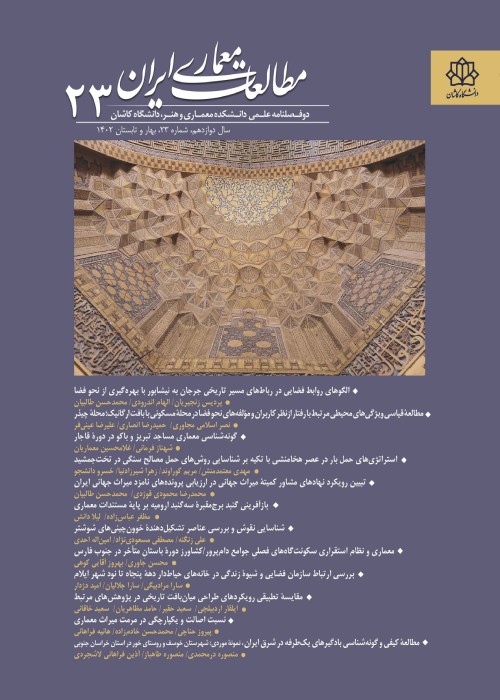Conservation of Architecture and its Relation to the History of Architecture:A Glance on Conservational Experiences in Iran
Author(s):
Abstract:
Conservation and history of architecture are separate disciplines, each having their own concepts. Conservation regards the protection of a historical property and the continued life of a monument, while the history of architecture tries to identify and understand the architecture of the past. Conservation deals with historical monuments that constitute remaining evidence of architectural history. In addition to the future of these monuments, an investigation of their history is also of paramount importance in conservation. In this research, we try to understand the kind of relationship between conservation of architecture and history of architecture. This paper aims to interpret their relationship for a better understanding of architectural history in Iran. The research employs a descriptive-analytical method and logical reasoning. Data collection procedure included library research and, in some cases, field observations. Furthermore, the subject of conservation was defined in both theory and practice and the history of architecture was provided with two interpretations. The confluence of the two disciplines comes about at two major points in the profession of conservation. The first point is at the phase of preliminary studieswhich mostly fall in the realm of the history of architecturewithout which proper conservation is impossible. The second point occurs in the practice of conservation when signs, which were unknown earlier, are discovered during conservation works. The signs are, in fact, new evidence to be used in history of architecture. The inter-relation of a conservationists method of conservation and his/her approach to the history of architecture can be either that of a facilitator or obstructor. Since the mid-1960s, conservation works in Iran express a relationship between architectural conservation and architectural history. Historiographies of some monuments such as the Masjed-e Jāme, Ālī-Qāpū Palace, and Chehel Sotūn Palace of Isfahan, as well as the Masjed-e Jāme of Ardestan were written alongside conservation works. The studies published show that findings during the practice of conservation are based on evidence and facts coming from the monument, and hence, they are quite different from historiographies that were produced in other ways.
Keywords:
Language:
Persian
Published:
Journal of Iranian Architecture Studies, Volume:6 Issue: 11, 2017
Pages:
169 to 188
magiran.com/p1749202
دانلود و مطالعه متن این مقاله با یکی از روشهای زیر امکان پذیر است:
اشتراک شخصی
با عضویت و پرداخت آنلاین حق اشتراک یکساله به مبلغ 1,390,000ريال میتوانید 70 عنوان مطلب دانلود کنید!
اشتراک سازمانی
به کتابخانه دانشگاه یا محل کار خود پیشنهاد کنید تا اشتراک سازمانی این پایگاه را برای دسترسی نامحدود همه کاربران به متن مطالب تهیه نمایند!
توجه!
- حق عضویت دریافتی صرف حمایت از نشریات عضو و نگهداری، تکمیل و توسعه مگیران میشود.
- پرداخت حق اشتراک و دانلود مقالات اجازه بازنشر آن در سایر رسانههای چاپی و دیجیتال را به کاربر نمیدهد.
دسترسی سراسری کاربران دانشگاه پیام نور!
اعضای هیئت علمی و دانشجویان دانشگاه پیام نور در سراسر کشور، در صورت ثبت نام با ایمیل دانشگاهی، تا پایان فروردین ماه 1403 به مقالات سایت دسترسی خواهند داشت!
In order to view content subscription is required
Personal subscription
Subscribe magiran.com for 70 € euros via PayPal and download 70 articles during a year.
Organization subscription
Please contact us to subscribe your university or library for unlimited access!


